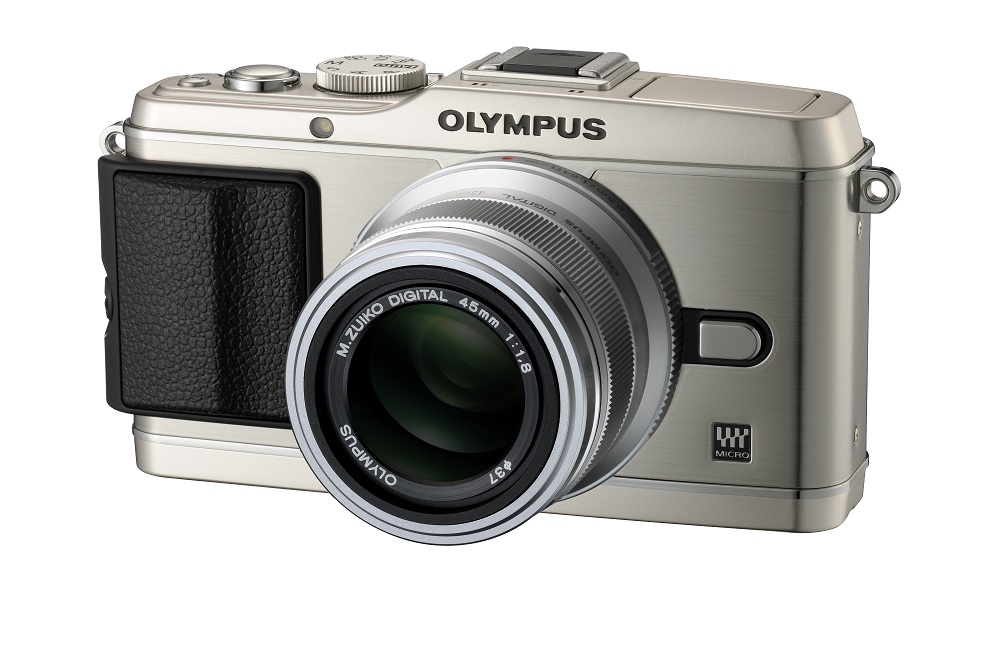Olympus announces new top-of-the-line PEN E-P3 interchangeable lens compact camera

June has been a bonanza for fans of interchangeable lens compact cameras. First came the Sony Alpha NEX-C3, then the Panasonic Lumix DMC-GF3, and just a couple days ago Pentax entered the fray with the Pentax Q. Last, but far from least, Olympus is out today with not just one, but three announcements: the top-of-the-lineOlympus PEN E-P3 as well as the PEN E-PL3 and PEN E-PM1.
Though it maintains a similarly retro-fabulous design as its predecessor the E-P2, the new and improved flagship PEN E-P3 is really a complete overhaul -- much of it geared toward improving performance, which has been a bit of an Achilles heel for Olympus' otherwise well-received PEN line. The camera uses the company's latest image processor, which enables improved shutter response time as well as a much faster auto focus system that delivers a whopping 35 separate focus points (topping even its big brother, the Olympus E-5 digital SLR). The E-P3's HD video capabilities outshine the E-5's as well with full 1080i recording in AVCHD or AVI formats and the addition of pixel-binning technology which Olympus claims improves video quality (cameras like Fujifilm's EXR line use pixel binning to improve low-light still image quality). A new 12.3-megapixel Live MOS sensor delivers higher ISO sensitivity levels, up to 12,800.
Another big change in the E-P3 is the addition of a 3-inch, 614,000-dot OLED touchscreen (with anti-fingerprint coating that actually seemed to work when compared side-by-side with an E-PL2's screen). Now, I'm usually a bit skeptical of touchscreen interfaces (especially in a more advanced camera like the E-P3), but I like Olympus' touchscreen philosophy here: Rather than being forced to unintuitively wade through touchscreen menus, you still use traditional buttons and dials to access most of the cameras functions -- only a few features are accessed by the touch screen (e.g., touch shutter release, auto focus position selection, and Live Guide access). In fact, you can turn the touch screen functionality off altogether, although I can see how it might come in handy in certain situations, such as when you want to set focus points or for zooming and scrolling during playback.
One of my favorite improvements is the new user interface, which I find to be really clean, intuitive, and downright attractive. The physical back panel controls now seem to be a hybrid of the E-P2 and E-PL2, retaining the E-P2's nice small thumbwheel to control shooting settings, but moving to the E-PL2's overall button and control layout (which I prefer), including the four-way controller and a dedicated video record button (new to the top-of-the-line model), which has been slightly relocated.
Another nice touch is that the camera comes with a removable grip so you can chose between the shallow grip (like the one on the E-P2), an optional deeper grip (more like the E-PL2's) that may be more comfortable when using larger lenses, or no grip.
Other new features include:
- Built-in pop-up flash
- Two new art filters (for a total of 10) and new variations for filters
- Art Bracket feature to record several Art Filter effects for each shot
- Live Guide access for all modes
- Built-in autofocus illuminator
- 3D shooting mode
Scheduled to start shipping in August and priced at $900 with either a 14-42mm f/3.5-5.6 zoom or a 17mm f/2.8 prime lens, the new PEN E-P3 takes the title of most expensive ILC from the Pentax Q, but of course that price tag buys you so much more camera than the Q.
Related stories on ZDNet:
- Pentax Q: Smallest compact interchangeable lens camera sports biggest price tag
- Panasonic’s new Lumix DMC-GF3 interchangeable lens camera is compact and curvy
- Olympus announces new E-P2 compact interchangeable lens camera
- Olympus announces new PEN E-PL2 Micro Four Thirds interchangeable lens camera
Related links:
